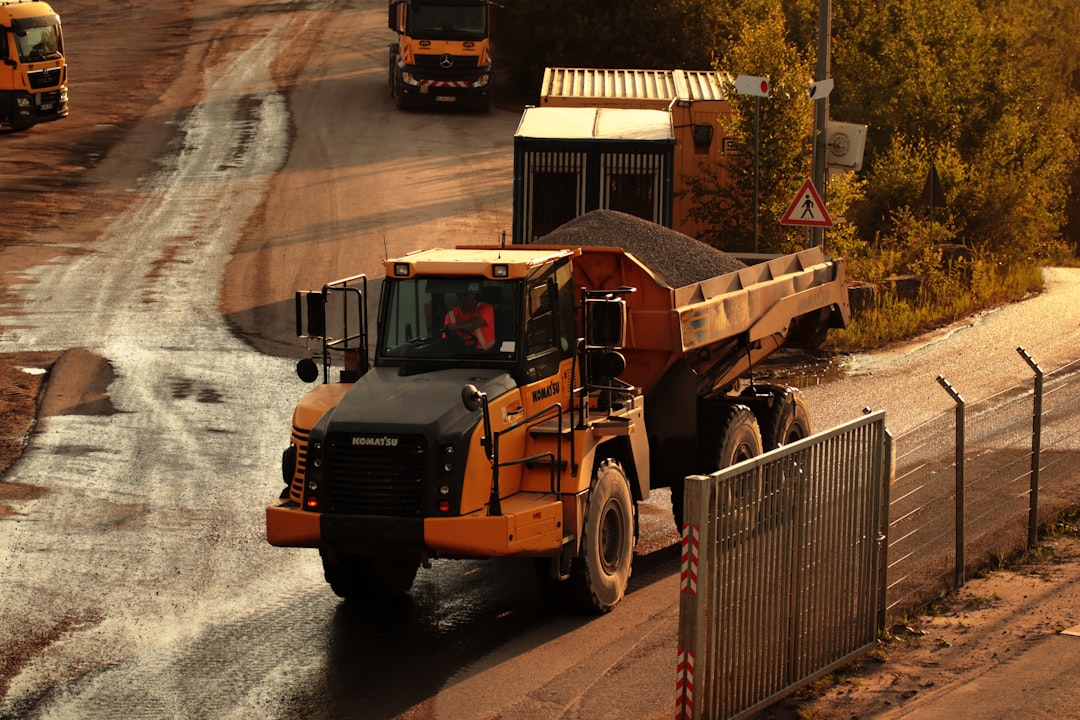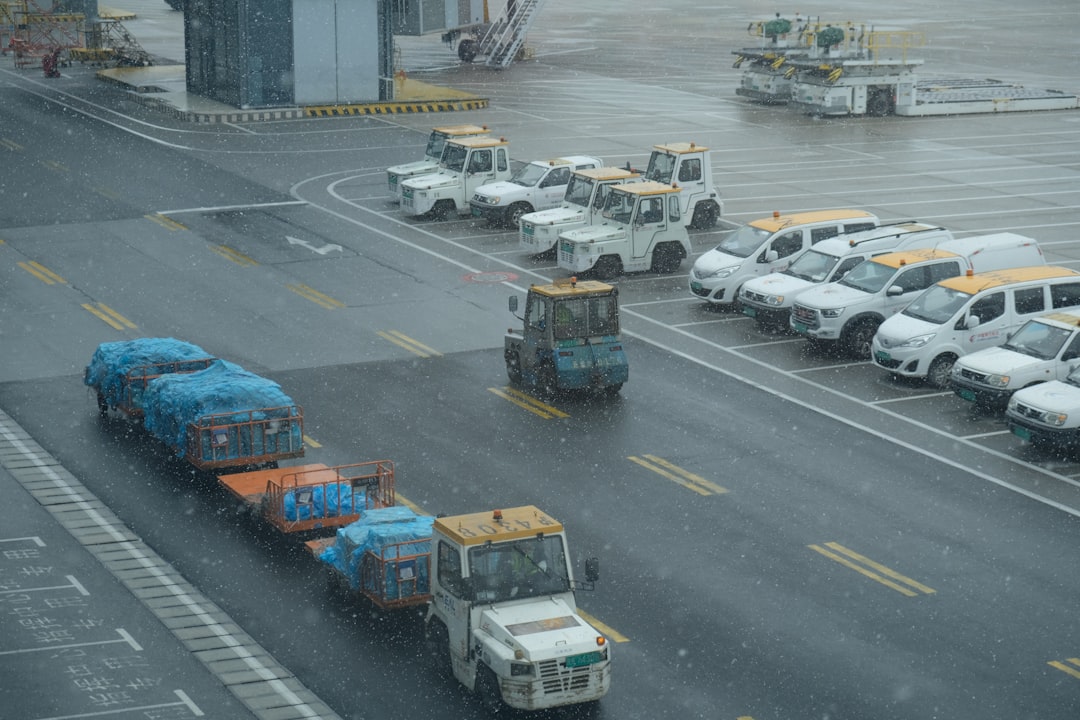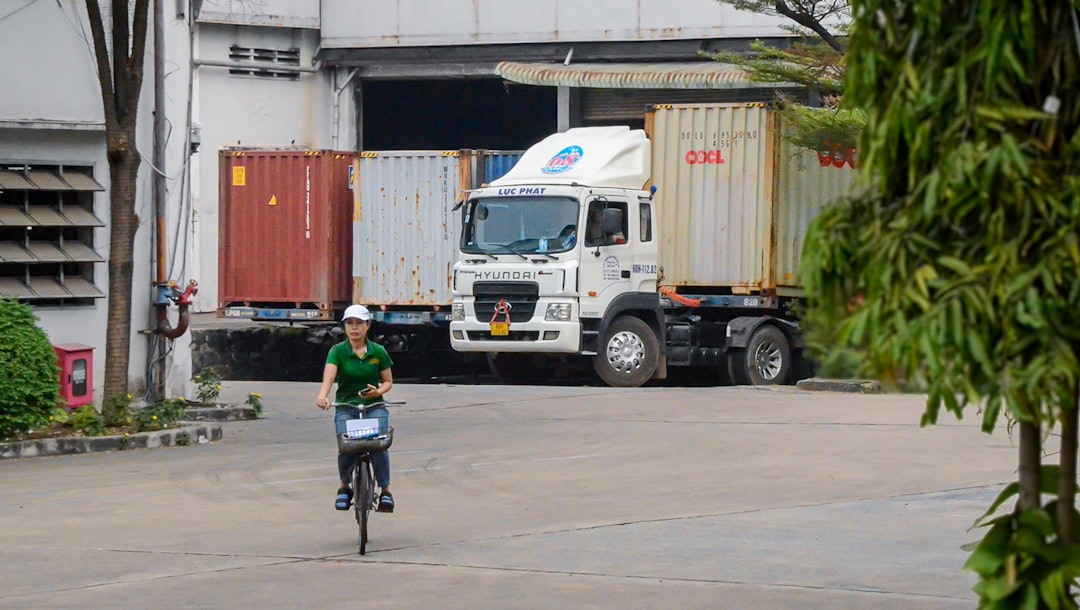

Engage prospects with a scan and streamline customer engagement with FREE QR code marketing tools by Sona – no strings attached!
Create a Free QR CodeFree consultation

No commitment

Engage prospects with a scan and streamline customer engagement with FREE QR code marketing tools by Sona – no strings attached!
Create a Free QR CodeFree consultation

No commitment
Hauling contractors today are under increasing pressure to bridge persistent gaps between fast-moving job sites, dispersed assets, and digital workflows. A common frustration across the industry lies in missed opportunities: high-value prospects and critical data points routinely go untracked amid analog processes, leading to lost leads, inefficiencies, or noncompliance. In environments where crews juggle compliance documentation, asset transfers, and customer requests, often while on the move, traditional pen-and-paper methods cannot keep pace with real-time demands and competitive growth strategies.
QR codes have rapidly emerged as an indispensable tool for hauling contractors seeking to close the divide between the physical and digital. By transforming trucks, equipment, signage, and paperwork into interactive entry points, QR codes bring transparency and efficiency to operations. Now, a single scan can seamlessly route drivers, customers, or field staff to tailored workflows, compliance forms, or service requests without burdensome manual entry or the risk of missed follow-ups. These real-world touchpoints can be measured, attributed, and acted upon, unlocking opportunities that once slipped through the cracks. For deeper context on execution in trade businesses, see this Contractor Magazine overview on contractor marketing.
As industry leaders integrate QR codes into core workflows, they not only unlock visibility and process automation but also build a foundation for smarter marketing and customer engagement. This guide explores practical strategies for using QR codes to address critical challenges faced by hauling contractors, spanning adoption trends, implementation best practices, legal compliance, and proven tactics for maximizing operational ROI.

For many hauling contractors, inefficiencies in capturing site data, managing compliance logs, or following up with prospects stem from reliance on outdated manual processes. Printed brochures, paper incident logs, manual sign-in sheets, and static decals give visibility without a pathway to action. Important leads often slip by when potential customers interact with physical assets but leave no digital trace, making these moments hard to track, measure, or act on. High-value prospects may inspect your capabilities in person, notice your truck decals, or read job site signage without ever entering a digital flow, which results in missed top-funnel opportunities.
QR codes bridge these gaps by turning every touchpoint into a measurable engagement. Rather than losing context during handoffs or paperwork transitions, contractors can replace analog bottlenecks with scan-to-action workflows. Paper checklists can become mobile forms, while dispatch phone numbers can become prefilled inquiry flows. Contractors can push updates dynamically, so a printed sign never goes stale and a decal never needs reprinting to change a URL or workflow.
By modernizing workflows with QR codes, progressive contractors reduce administrative overhead, improve compliance accuracy, and accelerate both prospect and customer follow-ups. The result is a more responsive operation and a pipeline built from high-intent, real-world interactions rather than guesswork.

Day-to-day, hauling contractors struggle to capture vital information across diverse locations and stakeholders. Field workers sign into new jobsites, customers confirm deliveries, supervisors document safety compliance, and dispatch teams distribute updated routing or site requirements. Paper logs introduce error risk and delay, and they limit real-time visibility into who is engaging with your brand and assets. Anonymous interactions, such as a project manager reading your truck decal or a superintendent referencing delivered material, often go untracked, leaving valuable intent signals uncollected.
QR codes address these persistent visibility issues:
For example, a QR code on a truck tailgate that routes to an on-call service request can capture a superintendent’s need in seconds. A code on a weigh ticket can trigger a proof-of-delivery confirmation and a short satisfaction survey. A sign at a bid walk can collect company details and scope interests for your estimating team. These small, measurable interactions compound into a precise, data-informed operation.

Hauling contractors operate across multiple workflows, so QR code formats should map to the task at hand. One size rarely fits all, which is why choosing the right format matters for adoption and measurable outcomes.
For workflows that change frequently, dynamic QR codes outperform static codes. Dynamic codes let you change the destination without reprinting and provide granular analytics for optimization. Use static codes for permanent, unchanging references like a public MSDS library or a long-lived safety policy PDF. Sona QR supports both static and dynamic formats, with centralized management so you can monitor and refine each campaign.

Despite substantial investments in fleet branding, signage, and compliance documentation, many hauling contractors struggle to convert offline visibility into measurable sales or operational data. Your assets circulate widely, but without a bridge from the physical world to your digital workflows, engagement remains invisible. For industry-specific ideas, Contractor Magazine shares practical marketing tips for service businesses.
Key placement opportunities include:
To maximize effectiveness, apply a few design and environment rules. Use high contrast, avoid placing codes on highly curved or reflective surfaces, and size codes so they can be scanned from the average viewing distance. Include a clear call to action like “Scan for immediate pickup” or “Scan to view site access map” to set expectations and increase scan rates. When possible, position codes between waist and shoulder height to match natural scanning ergonomics with phone cameras.

Hauling operations rely on precision and speed. When compliance breaks down, asset logs disappear, or customer signals go uncollected, projects slow and trust erodes. QR codes provide practical workflows that are easy for crews and customers to adopt in the field.
As these examples show, QR codes minimize administrative headaches and convert formerly anonymous interactions into high-value signals. That data feeds back into scheduling, safety, sales, and customer success, enabling managers to act with speed and confidence.
Traditional retargeting often misses the mark in B2B hauling because intent signals happen offline at jobsites, weigh stations, and yards. Without a mechanism to capture those signals, marketing budgets focus on low-intent web traffic while promising accounts remain anonymous.
Modern QR workflows transform offline interactions into structured, segmentable data:
With Sona QR, every code can carry metadata that tags the scan by jobsite, asset, campaign, and funnel stage. This lets your sales and marketing teams prioritize decision-makers who have demonstrated intent, not just those who happened to browse a webpage.
Offline visibility has always been a strength for hauling contractors, but it rarely translates into persistent digital engagement without careful orchestration. QR codes serve as connectors between your physical footprint and your digital channels, enabling real-time engagement and richer data collection across materials you already use.
Here is how QR codes enhance your broader strategy in hauling:
QR codes become the offline onramp to your digital engine. With a centralized platform like Sona QR, you can manage all codes, monitor performance by placement, and sync scan activity to your CRM and ad accounts. This turns every truck, sign, and flyer into a measurable channel and every scan into an opportunity for timely follow-up.
Fragmented or poorly executed QR deployments lead to missed scans, confused users, and data trapped in silos. A simple, disciplined approach helps you capture the right data and drive consistent engagement across jobsites and assets.
Before you begin, choose one high-impact use case to prove value quickly. For example, convert your delivery confirmation process into a scan-to-upload flow that captures photos, signatures, and GPS coordinates. Once your team experiences the speed and accuracy gains, you can expand to additional workflows.
Pick a goal with a clear business outcome. Common hauling examples include scan-to-quote from truck decals, scan-to-check-in at jobsite gates, scan-to-report-incident on safety boards, or scan-to-reorder from invoices. Define what success looks like in concrete terms, such as faster response times, fewer incomplete forms, or higher quote volumes.
Think through the user’s context. Will they scan while wearing gloves, under bright sunlight, or from a moving vehicle queue? Choose a use case where scanning is safe, practical, and clearly beneficial in the moment. When the value is obvious and immediate, adoption climbs quickly.
Decide between static and dynamic codes. Static codes are durable for long-lived resources like an MSDS library or a standard safety video. Dynamic codes should be used when you want editability, granular analytics, and retargeting options without reprinting decals or signage.
Match the destination to the action. A quote request belongs on a mobile-optimized form with conditional logic and file uploads. A safety acknowledgment belongs on a short, multilingual form with a timestamp and optional photo field. A dispatch call might be a prefilled SMS so critical details are standardized.
Design for visibility and clarity. Use high contrast between the code and background. Add your logo and brand colors in the frame, but do not distort the code modules. Include a short, benefit-focused call to action like “Scan to request a pickup” or “Scan to view access route.”
Test in real conditions. Verify scanning at common distances, angles, and lighting. Print at different sizes to ensure reliability from the expected viewing distance. If a code sits on a curved surface or near reflective metal, adjust placement or size. Choose print materials designed for weather, abrasion, and chemicals common in your environment.
Roll out codes where they will naturally be seen. For hauling operations, prioritize truck tailgates, cab doors, fuel areas, jobsite gates, weigh stations, delivery receipts, and rental equipment. Give each placement a unique code so you can compare performance by channel and location.
Support deployment with training and signage. Make sure crews know how to explain the purpose and benefits of scanning. Use visual indicators, arrows, and short CTAs to guide users. Whenever feasible, pair the QR with an alternative method like a short URL for redundancy.
Instrument every code with analytics. Use UTM parameters to attribute scans by source, medium, and campaign. Monitor scan volume, form completion, and time-to-response in a single dashboard. Identify high-performing placements and replicate their design and CTA patterns.
Iterate quickly using dynamic updates. Adjust destinations, refine forms, and A/B test CTAs without reprinting. Integrate with your CRM to trigger nurture emails, SMS alerts, or rep assignments based on scan context. Platforms like Sona QR make it easy to analyze performance by channel and act on insights in real time.
A longstanding pain point for hauling contractors is the inability to connect physical activity to revenue and risk outcomes. A superintendent might scan a truck decal, submit a request, and receive a quote, but if those touchpoints are not linked, marketing and operations cannot see the full picture. This limits your ability to invest in the channels that work and to fix the ones that do not.
Advanced QR platforms now allow contractors to plan, track, and attribute with precision. For a deeper framework, see Sona’s guide to offline attribution:
Useful benchmarks for hauling include scan-to-form completion rate, average response time after a scan, multi-scan journeys per account, and scan density by region or asset class. While numbers vary by market and use case, a healthy program shows steady growth in both scan volume and downstream actions, plus a decrease in time-to-first-response for service requests.
Sona QR captures real-world engagement at the source and syncs it into your marketing and sales systems. Paired with Sona’s intent data and attribution capabilities, you can connect scans to known buyers and revenue. Instead of stopping at the scan, you can follow the trail through the buyer journey and optimize accordingly.
To sustain performance gains and expand impact across your operation, apply these best practices that fit hauling’s unique physical environments and buyer journey.
Creative deployment examples that fit hauling include putting a QR code on roll-off dumpster panels for on-demand swaps, and adding a code to scale tickets that links to a satisfaction check plus a one-tap reorder. Each example keeps the next action one scan away and converts ordinary paperwork into a measurable moment.
For hauling contractors, QR codes represent more than a superficial digital upgrade. They are a strategic method for capturing intent, reducing waste, and linking offline activity to business outcomes. By addressing long-standing issues around lost leads, anonymous interactions, and unproven marketing ROI, modern QR systems help transform every field asset and customer interaction into a trackable, optimizable experience.
As adoption grows, contractors that unify asset tracking, compliance reporting, and lead generation through QR codes will gain speed, profitability, and agility. You can start small with one high-impact use case, measure the results, then expand methodically across placements and workflows.
Hauling contractors adopting a modern QR strategy are not just digitizing forms. They are creating seamless bridges between jobsite actions and digital systems. With dynamic, trackable QR codes managed in a centralized platform, you can engage real decision-makers at the moment of need, justify investments with data, and accelerate growth. Sona QR gives you the tools to generate codes, manage campaigns, capture analytics, and sync everything to your CRM. Start creating QR codes for free, then scale with confidence as you connect scans to revenue and make every interaction count.
QR codes have transformed hauling contractors from traditional service providers into tech-savvy, customer-focused leaders. Whether it’s streamlining access control, improving job tracking, or enhancing client communication, QR codes replace cumbersome manual processes with instant, mobile-friendly solutions that boost operational efficiency and customer satisfaction. Imagine effortlessly granting site access, verifying deliveries, or updating project statuses—all with a simple scan.
With Sona QR, hauling contractors can create dynamic, trackable QR codes in seconds, update access permissions or project details instantly without reprinting, and connect every scan to actionable insights that drive better decision-making and client trust. No delays, no confusion—just smarter, more seamless hauling operations that set you apart.
Start for free with Sona QR today and turn every scan into a gateway for smoother workflows, stronger client relationships, and increased business growth.
QR codes streamline operations by replacing manual paperwork with scan-to-action workflows, enabling real-time data capture, faster compliance reporting, and quicker customer follow-ups, which reduces administrative overhead and accelerates jobsite processes.
Best practices include deploying targeted QR campaigns on vehicles, signage, and print materials, using high-contrast weatherproof labels, integrating QR codes with CRM and ad platforms for tracking, providing clear calls to action, and testing codes under real field conditions.
QR codes placed on equipment allow contractors to capture asset transfers, usage times, and maintenance requests digitally, improving utilization, reducing lost-time incidents, and supporting preventive maintenance schedules.
Vehicle QR codes enable on-the-spot service requests, capture customer interest signals, facilitate quick access to quote forms or service menus, and help track engagement that can be linked to sales and operational outcomes.
QR codes convert physical interactions into measurable engagements by linking customers to forms for service requests, feedback surveys, proof-of-delivery uploads, and contact information, enabling faster response and personalized follow-up.
Use Sona QR's trackable codes to improve customer acquisition and engagement today.
Create Your FREE Trackable QR Code in SecondsJoin results-focused teams combining Sona Platform automation with advanced Google Ads strategies to scale lead generation

Connect your existing CRM

Free Account Enrichment

No setup fees
No commitment required

Free consultation

Get a custom Google Ads roadmap for your business






Launch campaigns that generate qualified leads in 30 days or less.
